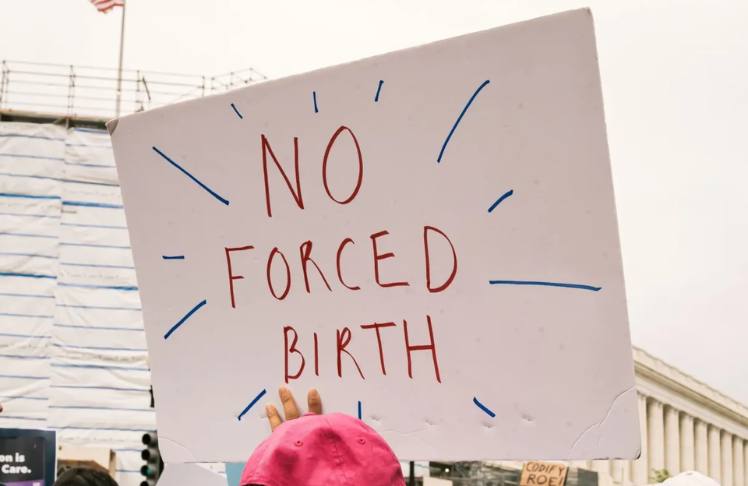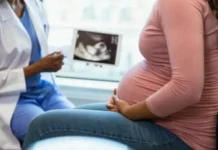
This post was originally published on Afro
By Mylika Scatliffe
The stark implications of the historic June 2022 Supreme Court abortion ruling were detailed in an expert media briefing by the Bloomberg School of Public Health on May 18.
On June 24, 2022, nearly 50 years of the protected Constitutional right to abortion was dismantled when the United States Supreme Court issued its decision in Dobbs v. Jackson Women’s Health Organization, overturning Roe v. Wade and Planned Parenthood v. Casey.
Historically, abortion is a topic highly charged in the political and religious realm. However, when viewing abortion strictly as health care for women, the ramifications of the Dobbs decision are far reaching and potentially devastating.
The Dobbs ruling effectively returned the regulation of abortion to the state level.
Joanne Rosen, co-director of the Johns Hopkins Center for Law and Public Health, spoke on the decision.
“Dobbs returned the issue of abortion regulation to the people through their elected representatives, meaning that states and Congress are now free to regulate, restrict and even ban abortion without the long term constitutional protections that had been exerted by Roe v. Wade and Planned Parenthood v. Casey,” said Rosen.
Even before the Dobbs decision, state legislatures began to observe the shift in power with the change in the composition of the Supreme Court.
“In 2021, the year before the Dobbs opinion was released, abortion hostile states enacted 108 abortion restrictions. In 2022, there were 50 additional states abortion restrictions enacted, many of which were outright or near bans of abortion,” Rosen continued.
In the 11 months since the Dobbs decision was released, abortion has been banned in 14 states.
Dr. Suzanne Bell, assistant professor in the department of Population, Family and Reproductive Health at the Bloomberg School of Public Health also participated in the media briefing. She noted that the Dobbs decision was a “devastating and unprecedented reproductive health policy change with potentially significant impact implications for reproductive autonomy, fertility, and maternal and infant health in the United States that will only become apparent in the coming years.”
According to Bell, approximately one in three women and girls in the United States currently live in a state with little or no access to safe abortion services. These states are predominantly in the South or Midwest, and in areas with large populations of Black and Brown people, those living in poverty and those who are unmarried.
“This will result in overrepresentation of poor and minority individuals among people seeking abortion care,” said Bell.
The restriction of safe abortion services in these areas will impact the ability of disadvantaged groups to make family planning decisions on their own terms, resulting in long term bleak repercussions for population, health, and disparities.
Bell also noted these populations encounter the most severe difficulty in obtaining abortion in restrictive states, as well as a greater risk of negative pregnancy and birth outcomes. Risks including but not limited to delayed prenatal care, premature births, low birth weight and poor maternal morbidity and mortality.
Abortion restrictive states may experience risky outcomes due to changes in the availability of clinicians who can deliver safe abortions and overall maternal and prenatal care. This not only affects timely access to safe abortion care, but overall accessibility of timely maternal and prenatal care. The stress of unplanned pregnancies, or even late diagnosis of pregnancy has negative effects on the pregnant woman and developing fetus.
“We already have some evidence of the myriad impacts of recent abortion restrictions,” said Bell.
Research from the Society of Family Planning, which has evaluated changes in abortion provisions since the Dobbs decision, indicates there were 32,000 fewer facility based or telehealth abortions nationwide in the six months following the decision.
“Some expect self-managed medication abortion will fill the gap,” Bell continued.
Most people are not aware of medication abortion as an option, so it is not likely that medication abortions will fully offset the decline in abortions provided in medical facilities. This can result in a major consequence of delay in recognizing pregnancy as well as receiving abortion medical pills. Such delays will push many people beyond the FDA approved gestational limit of 10 weeks for abortion via medication.
“Medication abortion has been the most common method of pregnancy termination since 2020. In the year 2020, it was used in 53 percent of abortions, and has been safely used by over 5.3 million women in the United States since the year 2000,” said Bell.
In addition, the Dobbs opinion has reinvigorated the efforts of some abortion opponents to enforce the 1873 Comstock Act, and to employ it as a tool to abolish abortion nationwide as noted in the lawsuit filed by anti-abortion advocates against the FDA, Alliance for Hippocratic Medicine v. FDA. This would be achieved by banning the mailing or transport of abortion pills and potentially medical instruments and devices that are used to perform procedural or surgical abortions. This lawsuit has brought the nation’s attention to the drug mifepristone, of which one use is medication abortion.
The Supreme Court has ruled that mifepristone will continue to be available for the duration of the litigation, up to and including an appeal to the Supreme Court. In the short term, there is no change in access to the drug.
“In terms of the kind of broader public health implications, if there is ultimately an unfavorable decision from the Supreme Court (regarding the use of mifepristone), this restriction will not stop medication abortions from occurring in the United States. It will simply force healthcare providers to rely on the misoprostol only regimen,” said Rosen. “This method is still very safe and used in many parts of the world, but is somewhat less effective and causes more uncomfortable side effects.”
The post Experts discuss implications of abortion restriction on women’s health appeared first on AFRO American Newspapers.















